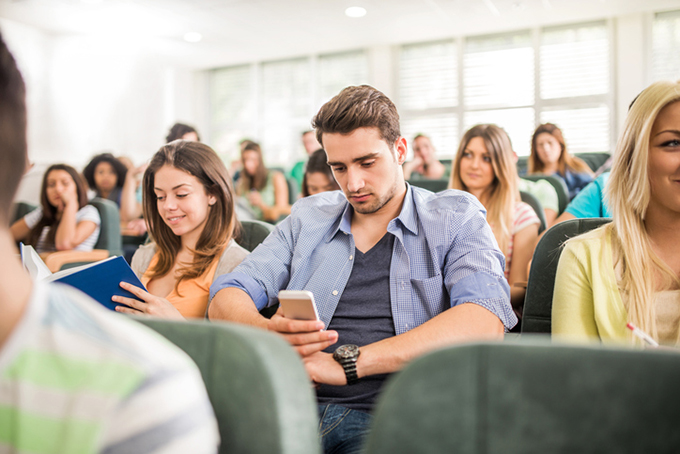
The debate of smartphone use within classrooms is a heated one, with the two sides appear to have unyielding stances in favor or against them and the new research has merged has keep the fire of this is a complex, ongoing discussion roaring.
What are the advantages of having smartphones available in classrooms, and are those advantages enough to outweigh the disruptive and detrimental consequences?
In their article on ways classroom teachers can stay ahead of the digital curve, Concordia University-Portland encourages educators and parents to discuss this and other hot topic together with their students and hear their opinions on the matter.
There should be an environment that shows students that their voice matters and you will listen, even if you don’t always agree; this will give everyone more opportunities to learn about the effects of technology in society. Having a discussion like this can also help students see and (hopefully) understand the negative effects of using their cellphones in the classroom — such as distracting them from valuable learning opportunities — and help them analyze the benefits of leaving their phone off … sometimes.
There are several things to consider amidst this conversation, and opening up the dialogue can help educators and school organizations find the best solution possible.
Smartphones can provide a better connection
Staying relevant with innovative curriculum inside classrooms is an important concern for schools and educators. Digital literacy is growing more crucial as society begins to see a cultural and educational shift within classrooms. The way students learn is undoubtedly changing as advancements in technology continue. Samsung is actually finding educational solutions to help students connect their phones with their classroom curriculum. Creating this useful connection can help with comprehension and involvement with the material.
It also shows students how their smartphones can (and should be) used for educational, focused purposes. Learning and understanding smartphone responsibility — and how to avoid distractions while utilizing the resources available — is vital for students of this century. This kind of self-discipline will be helpful throughout their education and ultimately as they enter the workforce and journey through adulthood. The distractions don’t just go away after a student graduates high school. Ultimately, we have to learn how to balance our obligations with our personal distractions.
There is always trouble in paradise
In a perfect world, that necessary self-discipline would be as easy as subscribing to a YouTube channel. Of course, it’s not though. This study by the Centre for Economic Performance shows that there are indeed negative (and perhaps unavoidable) impacts with productivity when it comes to smartphones in the classroom. The study explains that high-achieving students seem to neither gain nor lose from a smartphone ban at school; they are able to focus and perform well, regardless of access to their phones. Issues with productivity arise with the low-achieving students, who often already struggle to concentrate — even more so with access to a smartphone. In the study, the smartphone ban actually indicated low-achieving students having a 14.32 percent increase in productivity with a ban in place. So how should the school systems reconcile the difference in productivity with the overall usefulness? Moreover, can they?
Starting a Conversation
It’s safe to assume that a big concern for educators and parents of K -12 students is the distraction of smartphones at school. Students struggle disconnecting from their phones and social media for just a few hours sometimes. It’s also fair to say that life is full of distractions — excluding smartphones — and students could benefit from learning how to be responsible with their smartphone habits instead of banning their use outright. However, establishing an environment for students away from smartphones, social media, and other online distractions, can take the pressure off of students to always be plugged in. Learning to focus on the present, on reality, on the teacher standing at the front of the classroom giving a passionate, revolutionary lecture on climate change will give them experiences that no smartphone could possibly provide. As middle school teacher, Jose Luis Vilson, puts it: “it’s a lot like the other things that we have out there that perhaps are perilous if we don’t set some sort of standard, or at least have a sense of saying, ‘Let’s have a conversation around this,’ instead of trying to say, ‘It doesn’t exist.’”
It’s Always Better to Adapt
Educators and school organizations may not be able to agree on the use of smartphones in the classroom, but everyone can agree that this technology is here to stay. Adapting our education methods with smartphones won’t always be simple, but it will always be necessary.
